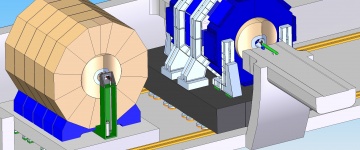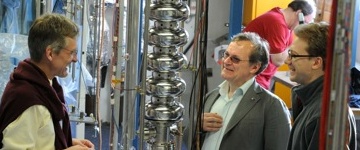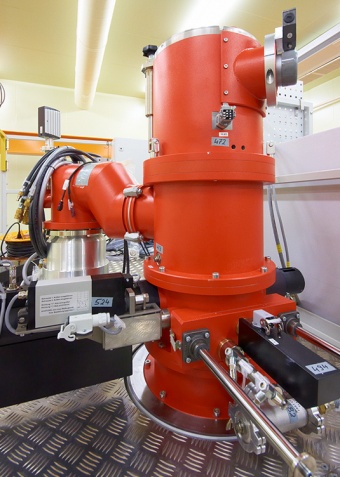Image of the week
Electron gun placed on KEK electron beam welding machineIn Spring 2011, an electron beam welding (EBW) machine was delivered to Japan from a manufacturer in Germany for building a cavity production test plant on the Tsukuba campus of KEK. This picture shows the electron gun, which was recently placed on top of the EBW vacuum vessel with help from a German engineer. |
In the News
-
from Chicago Sun-Times20 June 2011Fermilab expects to lose up to 100 employees over the next several months as workers are given an opportunity to take buyouts as part of an effort to avert layoffs.
-
from CERN17 June 2011“When we set ourselves the objective of achieving one inverse femtobarn in 2011, it was for good reason: that amount of data could well give us access to exciting new physics.”
-
from BBC News15 June 2011The multinational T2K project in Japan says it has seen indications in its data that these elementary particles can flip to any of their three types.
-
from KEK15 June 2011For the first time, it was possible to observe an indication that muon neutrinos are able to transform into electron neutrinos over a distance of 295 km through the quantum mechanical phenomena of neutrino flavor oscillations.
Copyright © 2025 ILC International Development Team




